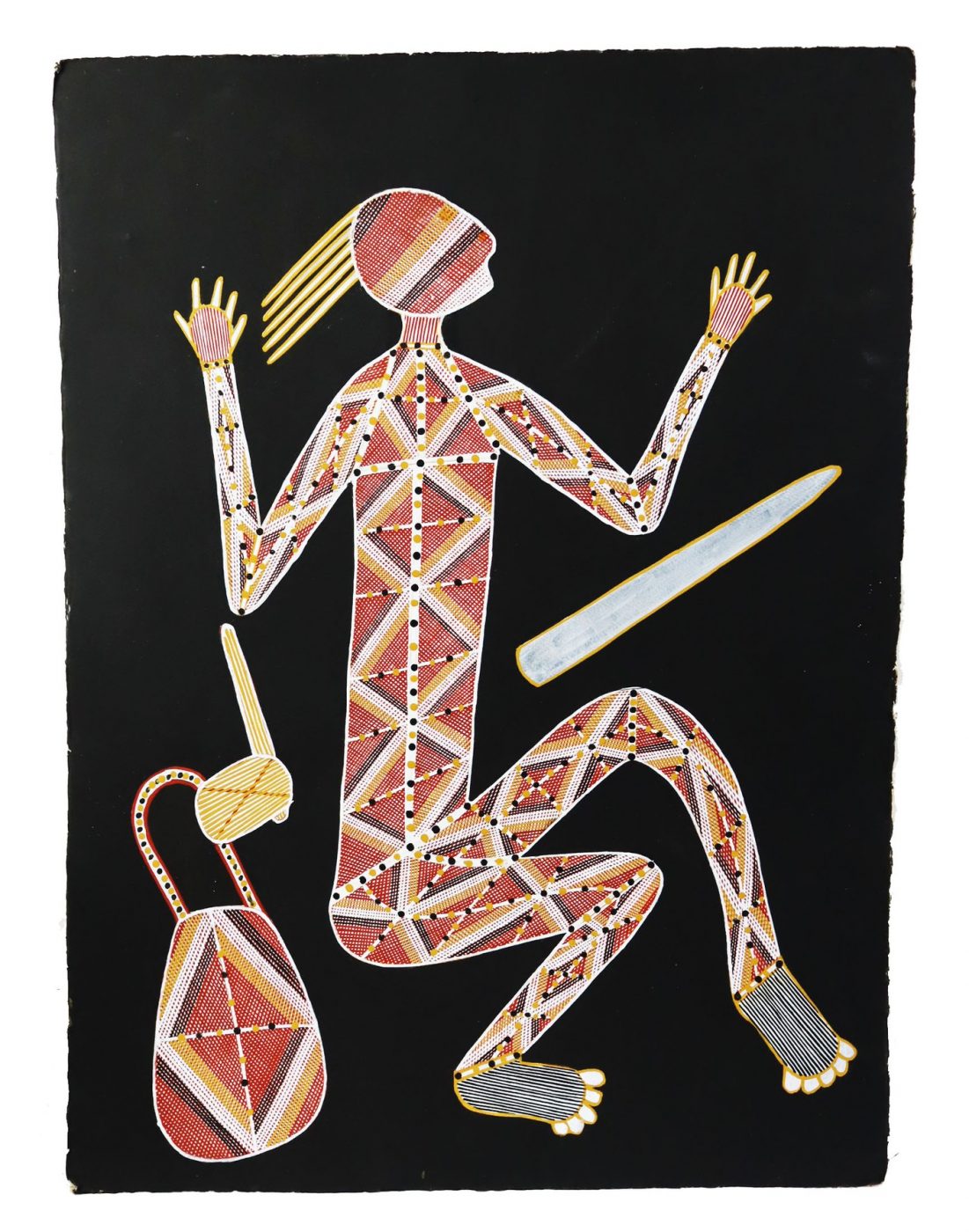Mimi’s Hunting
$1,735
Aboriginal people of western Arnhem Land say that their Mimi rock pictures were painted not by humans but by the Mimi spirits. The drawings, usually in red ochre, show elegant, graceful stick-like human figures in action – fighting, running, dancing, leaping and hunting, preparing meat and using fire.
The Mimi live in the nooks and crannies of the rocky landscape, coming out at night. They are said to be so thin and frail that they can emerge from their hiding places only when there is no wind, otherwise they would be blown away. The Mimi not only created these lively self-portraits, but also are the Dreaming ancestors who taught people to paint, hunt, dance and compose songs. They are like humans, but they live in a different dimension. They were depicted during the freshwater period. The Mimi are dangerous if approached the wrong way, may kick, knee, slap, smash with a racket like object or sit on someone; which causes sometimes fatal injuries.
Depicted are Mimi represented as bininj (man) and daluk (woman) with typical traditional hunting tools; Dilly bags, bondok (woomera), kundjinem (bark vessels), karramalk (stone axe), and kunbarlkbu (digging sticks).
